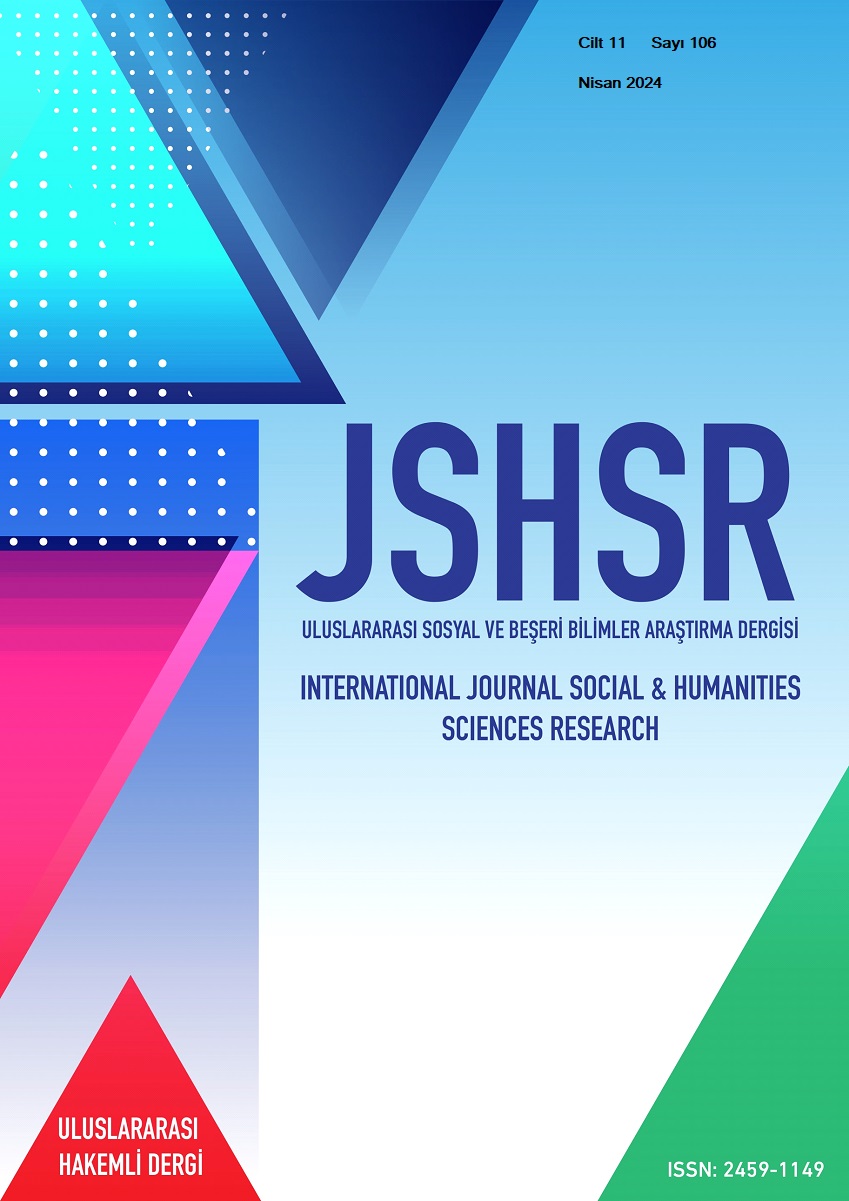Kasımpaşa Ecole In Religious And Sufi Music
DOI:
https://doi.org/10.5281/zenodo.11113052Keywords:
Tasawwuf, Mevlana and Mawlawism, popular culture, Kasımpaşa ecoleAbstract
Popular religious representations in daily life through popular cultural products that focus on Sufism are the subject of this study. The main subject of the research is where Turkey's modernization manifests itself in terms of laicism and secularism, which social classes (law, education, etc.) and individual levels (family, worship, daily life, etc.) it penetrates. After the 1980s and especially the 2000s, as a result of the increasing presence of religious mystical elements in popular culture, religion-oriented motifs began to appear in popular culture. With this new Form, it aims to reveal how religious and Sufi concepts, such as religion and Mevlevi, have changed on this basic research axis, in terms of cultural sociology. In our study, text analysis, discourse analysis and semiotic analysis of films and advertisements, written and audio-visual popular culture products were discussed. These analyzes have revealed that while popular culture products profane sacred elements, religious melodies shape popular culture to a great extent, popular products with religious-mystical content are incorporated into the postmodernist understanding, and Sufism plays an important role in redefining the field of religion philosophically, culturally and politically.
References
Adana Musiki Dernegi (t.y.). http://adanamusikidernegi.com/?&Bid=860679.
Dutu, A., & Cernovodeanu, P. (Eds.). (1973). Dimitrie Cantemir: Historian of South East European and Oriental Civilizations. Association Internationale d'Etudes du Sud-Est Européen.
Facebook (t.y.). https://m.facebook.com/p/Hafız-Recep-Camcı-100063511842975/.
Feldman, W. (2019). The emergence of Ottoman music and local modernity. YILLIK: Annual of Istanbul Studies, 1(1), 173-179. https://doi.org/10.53979/yillik.2019.10.
Feldman, W. (2023). Music of the Ottoman Court: Makam, composition and the early Ottoman instrumental repertoire. In Music of the Ottoman Court. Brill.
İnalcık, H. (2014). Devleti Aliyye Osmanlı İmparatorluğu Üzerine Araştırmalar 2. Altin Kitap.
İslam ansiklopedisi (t.y.). https://islamansiklopedisi.org.tr/batanay-kemal#:~:text=Türk%20mûsikisi% 20bestekârı%20ve%20ta%27lik%20hattatı.&text=7%20Şubat%201893%27te%20İstanbul,%2C%20annesi%20Ayşe%20Hanım%27dır. .
Özer, M. E. (2013) Tarihinde Gelenekli Bir Sanat Mahfili: Sertarikzâde Tekkesi - Sertarîkzâde Mehmed Emin Efendi Dergâhı'nın 300 yıllık tarihi.
Pourjavady, A. H. (2005). The Musical Treatise of Amir Khan Gorji (c. 1108/1697). PhD diss., University of California, 74.
Stokes, M. (1995). O. Wright: Words without songs: a musicological study of an early Ottoman anthology and its precursors.(SOAS Musicology Series, Vol. 3). xii, 321 pp. London: School of Oriental and African Studies, University of London, 1992.£ 25. Bulletin of the School of Oriental and African Studies, 58(1), 154-155. https://doi.org/10.1017/S0041977X00012209.
Sultan_ve_tekke (t.y.). https://d1wqtxts1xzle7.cloudfront.net/
Wikipedia (t.y.). https://tr.wikipedia.org/wiki/Hâfız_Burhan.
Downloads
Published
How to Cite
Issue
Section
License
Copyright (c) 2024 INTERNATIONAL JOURNAL OF SOCIAL HUMANITIES SCIENCES RESEARCH

This work is licensed under a Creative Commons Attribution 4.0 International License.


